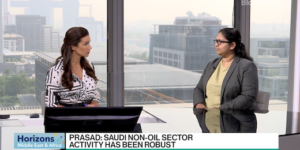[This article appeared on FinanceAsia in Jan 2015; link to the original article: http://www.financeasia.com/News/393885,rise-of-the-redback-a-middle-eastern-perspective.aspx]
This year will mark a milestone in the internationalisation of the Renminbi, with the RMB likely to become part of the IMF’s SDR currency basket, providing official, and international recognition of its becoming more “widely used and widely traded”. China has actively fostered RMB internationalisation by facilitating RMB settlement of trade transactions, linked the Hong Kong & Shanghai exchanges, allowed the offshore issuance of RMB bonds and holding of deposits, and set-up local currency swap lines with central banks.
A Redback currency zone and Redback bond market are on the near horizon. The Renminbi is already one of the 10 most-used currencies for payments worldwide. From just 3% in 2010, the RMB is now used to settle around 24% of China’s total trade. Standard Chartered bank forecasts that by 2020 some 28% of international trade will be denominated in RMB and by 2015 more than half of China’s trade with emerging markets will be settled in RMB. The trend is clear: a multi-polar global economy is heading to a multi-polar monetary system with three major currencies, the US$, the Euro and the RMB. A new international financial architecture is emerging with multiple international financial centres: Shanghai and Mumbai will join the ranks of London and New York. Expect the IMF to open Asian headquarters in Beijing within this decade.
China has become the GCC’s single most important trade partner replacing the US and Europe. It is becoming the main external investor as GCC economies remove restrictions to foreign investment and increase the diversification of their economies. Given its location at the mouth of the Gulf, international connectivity, growing linkages to Africa, and efficiency of its infrastructure, the UAE is now the logistics hub for China: some 70% of Chinese exports are re-exported via the UAE to the other GCC countries, India, Iran, East and North Africa. But these are still timid steps on a long road of historical rediscovery.
Active steps need to be taken for the GCC banking and financial system to be integrated into the emerging ‘Redback Zone’ where payments, capital markets, banking and financial assets and transactions will be based on the Renminbi as an international currency. As Western banks & financial institutions face growing regulatory constraints, restructure, recapitalize and retrench and divest assets in the Middle East, Chinese and Asian banks need to seize the opportunity and replace them in their traditional role of financing trade and investment in the Middle East.
The cornerstone will be financing trade. The GCC & China should accelerate the finalization of their Free Trade Agreement which has unduly lingered in negotiations. The RMB should be used to finance, clear and settle trade between the Middle East, the GCC and China. It is economically inefficient to use dollars and euros to finance GCC-China trade and investment links! There is no economic or financial reason why oil should not be priced, and payment settled in RMB. This would create the basis for an active forex market in RMB and lower transactions costs and diminish risks.
RMB liquidity is being established. The PBoC has established bilateral RMB swap lines with the UAE and Qatar which create the financial facilities to enable trade and investment transactions. China is establishing RMB Clearing Arrangements in Qatar, in addition to extending the RQFII Pilot Scheme to Qatar with an initial quota of RMB 30 billion.
RMB swap lines should be extended to the other GCC central banks. Given the level of trade a GCC-China Renminbi swap line would amount to about RMB 180-200bn, given that the GCC countries account for about 2.5% of China’s total trade.
As Asian and Gulf countries become increasingly integrated into China’s global supply chain, the RMB will be increasingly used to finance trade along the “New Silk Road Economic Belt”. But China needs to accelerate development of its Redback bond market and provide access: the GCC need RMB assets as part of their international reserves. China should invite the GCC to participate in the Asian Infrastructure Investment Bank and extend its scope to the Middle East.
The Redback cometh and the Redback market will be the biggest disruption to international financial markets in the coming decade.
Rise of the Redback: A Middle Eastern Perspective, Op-ed in FinanceAsia, Jan 2015
27 January, 2015
read 3 minutes
Read Next
TV and radio
Bloomberg’s Horizons Middle East & Africa Interview, 17 Jul 2024
Aathira Prasad joined Joumanna Bercetche on 22nd July, 2024 as part of the Horizons Middle
18 July, 2024
media page
“A GCC spaceport could bring galactic gains”, Op-ed in Arabian Gulf Business Insight (AGBI), 4 Jul 2024
The opinion piece titled “A GCC spaceport could bring galactic gains” was published in the
5 July, 2024
media page
“Central Bank Digital Currencies: Will they replace the cash in our wallets?”, Op-ed in The National, 30 Jun 2024
The article titled “Central Bank Digital Currencies: Will they replace the cash in our wallets?”
30 June, 2024





